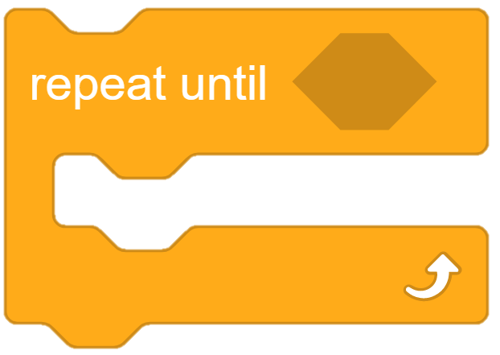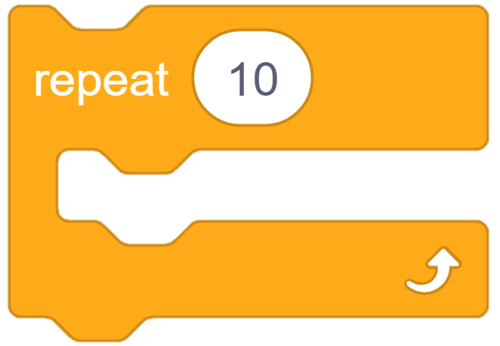Lesson 9: Loops and arrays combined

About this lesson
This is the ninth in a series of lessons to transition from visual coding to text-based coding with a general-purpose programming language.
Year band: 5-6, 7-8
Curriculum Links AssessmentCurriculum Links
Links with Digital Technologies Curriculum Area
| Strand | Year | Content Description |
|---|---|---|
| Processes and Production Skills | 5-6 |
Design algorithms involving multiple alternatives (branching) and iteration (AC9TDI6P02). |
| 7-8 |
Design algorithms involving nested control structures and represent them using flowcharts and pseudocode (AC9TDI8P05). Trace algorithms to predict output for a given input and to identify errors (AC9TDI8P06). |
Assessment
Students undertake a self-reflection of the programming task. The teacher can use the completed self-assessments to assist in summative assessment.
In assessing code in languages like Python or JavaScript, consider a rubric that brings in important skills for general-purpose programming.
Learning hook
Start by watching the short video What is Big Data and how does it work?
In previous lessons, we've made simple tools and games. This lesson is about combining the power of arrays and loops to write programs for one of the most important tasks computers have: processing data.
We'll see that arrays and loops work hand-in-hand. Arrays store hundreds, thousands or millions of values, and loops allow us to access and manipulate each stored value in the same way.
Without the simple techniques in this lesson, we'd never be able to work with big data.
Learning map and outcomes
In this lesson, students will:
- access an online programming environment for visual code (Scratch) and for General Purpose Programming (Python or JavaScript),
- code a program that combines arrays and loops to analyse student marks and produce summary information,
- use the combined power of arrays and loops to process new data.
Learning input
Begin by watching the video demonstrating the student scores program:
As a class, read over the structural pseudocode below then answer following questions one by one to help understand the program and what it does. (Click here for a Scratch adaptation of the program.)
BEGIN
student_marks ← [83, 72, 92, 65, 54, 54, 78, 67, 52, 54, 48, 69,
87, 55, 51, 52, 44, 57, 79, 64, 66, 19, 82, 71,
66, 31, 87, 83, 64, 78]
Using a loop...
Display each students number and mark from student_marks
high_mark ← determine the highest mark in the student_marks
Using a loop...
low_mark ← determine the lowest mark in the student_marks
Using a loop
grade_a ← assemble an array of student numbers with marks >=85
grade_b ← assemble an array of student numbers with >=65 and <85
grade_c ← assemble an array of student numbers with >=45 and <65
grade_d ← assemble an array of student numbers with >=25 and <45
grade_e ← assemble an array of student numbers with <25
Display high_mark
Display low_mark
Display grade_a
Display grade_b
Display grade_c
Display grade_d
Display grade_e
END
QUESTIONS:
- What is the main input data for the program?
- How many student marks are in the array?
- After listing off the marks, the program displays two useful pieces of information about the student marks that were determined earlier. What are these?
- Finally, the program displays five arrays assembled earlier. What do these store?
- IMPORTANT: Why are loops necessary for this program?
- Don't Python and JavaScript have built-in functions to work with arrays?
Two types of loops
Remember, there are two main types of loops: while and for
A while loop is like an if-then structure, except the code inside repeats as long as the condition is met.
Examples:
- repeat while the user has not entered the correct password
- repeat while the enemy is still alive
- repeat while we have time left to win
- repeat while a number hasn’t reached a target (this one is normally done with a for loop)
The closest Scratch equivalent is the repeat until block, but its logic is opposite. It repeats until a condition is met, not while a condition is met.
A for loop is specialised for counting. The code inside repeats a certain number of times.
The counter (also called the index variable) changes each time the loop runs. It can be used to pick each item's position as the loop works through an array.
Examples:
- repeat a message 10 times
- produce a series of numbers from 1 to 10
- produce a countdown from 10 to 1
- access each item in an array
The closest Scratch equivalent is the repeat block, but it is less flexible and does not provide access to the counter.


- An array of whole numbers for student marks.
- There are 30 marks in the array.
- The highest mark achieved and the lowest mark achieved.
-
The array grade_a stores the student numbers for all marks from the input array that are greater than or equal to 85. grade_b works on marks greater than or equal to 65 and less than 85, etc.
(Student numbers are just the positions in the input array, ie. the first mark in the input array is student number 0, the second mark is student number 1, and so on.)
- Loops and arrays work hand-in-hand. The student_marks array contains 30 numbers, so it would be very tedious (and not very adaptable) to access each number one-by-one over 30 lines of code. As we'll see in this lesson, loops allow us to iterate through the array, accessing each number with the short code inside the loop.
-
It is true that Python and JavaScript have convenience functions for working with arrays. For example, Python's print(student_marks) will display the array contents. Another function max(student_marks) gets the highest value.
But these functions are limited in how they do what they do. While print(student_marks) will display the array contents, it does not allow control over how it is displayed. The function max(student_marks) gives us the highest value, but what if we wanted to ignore outliers, or perform some custom operation while working through the array?
Learning construction
Step 1: Getting highest and lowest marks
Solution Code
The above video demonstrates coding the first part of the student marks program in Python. Try it yourself! Choose a link to start with the data already in place, then check the completed code so far.
Solution Code
Step 2: Tinker task
First, add a few more scores to the array at the start: 78, 71, 14, 96 and 84. Test your program to make sure it still works as expected.
Next, see if you can determine the average (mean) score and display it. You'll need a loop to find the sum of all the scores first.
Solution Code
Step 3: Completing the program
The above video demonstrates coding the remainder of the student marks program in Python. Try it yourself before checking the completed code (including JavaScript).
Solution Code
Step 4: Tinker task
At the end of the program, display the number of students who received an A grade, the number of students who received a B grade and so on.
Solution Code
Challenge
These challenges use the skills covered so far.
Challenge 1
A class of students has calculated the grams of sugar in their lunches, and you have collected the following data:
| 17 g | 10 g | 14 g | 15 g | 12 g | 12 g | 14 g | 9 g |
| 12 g | 23 g | 6 g | 12 g | 24 g | 10 g | 4 g | 16 g |
| 17 g | 10 g | 21 g | 23 g | 3 g | 20 g | 8 g | 7 g |
Your task is to write a program to assign star ratings to the lunches based on the amount of sugar.
- Lunches with < 6g of sugar receive 5 stars.
- Lunches with >= 6g and < 10g receive 4 stars.
- Lunches with >=10g and < 15g receive 3 stars.
- Lunches with >=15g and < 20g receive 2 stars.
- Lunches with >=20g receive 1 star.
For this challenge, you don't need to create arrays for the star ratings, but you do need to loop through the main data array and display a rating for each lunch as follows:
Lunch no. 0 gets 2 stars. Lunch no. 1 gets 3 stars. Lunch no. 2 gets 3 stars.
a. Prepare pseudocode first.
BEGIN
lunches ← [17, 10, 14, 15, 12, 12, 14, 9, 12, 23, 6, 12, 24, 10, 4, 16, 17, 10, 21, 23, 3, 20, 8, 7]
noOfLunches ← 24
For i from 0 to noOfLunches - 1
If lunches[i] < 6
starRating ← 5
Else If lunches[i] < 10
starRating ← 4
Else If lunches[i] < 15
starRating ← 3
Else If lunches[i] < 20
starRating ← 2
Else
starRating ← 1
End If
Display 'Lunch no.', i, 'gets', starRating, 'stars.'
End For
END
b. Code the program in Python or JavaScript.
Solution Code
Challenge 2
a. A Selection Sort is one of the simplest algorithms for sorting values in an array, that is, putting the values in order. In this challenge, you'll write code for a selection sort that works by repeatedly moving the smallest value in an unsortedList into a sortedList.
First, read the pseudocode below. As a class or in pairs, use a trace table to test the algorithm.
Download a template version and a completed version for the trace table (A3 size).
BEGIN
unsortedList ← [11, 25, 12, 22, 64]
sortedList ← []
noOfValues ← length of unsortedList
Display "Here's the unsorted array: ", unsortedList
// Repeat the whole algorithm enough times to move every value.
For i from 0 to noOfValues - 1
// Identify the smallest value currently in the unsorted list.
smallest ← 100
For j from 0 to length of unsortedList - 1
If unsortedList[j] < smallest
smallest ← unsortedList[j]
End If
End For
// Move the smallest value across to the sorted list.
Remove smallest from unsortedList
Append smallest to sortedList
// Display as we go.
Display "Here's the sorted array: ", sortedList
End For
END
b. Next, implement the code in Python or JavaScript, using these tips:
- In Python, the remove function will search for a value and remove it from an array.
eg.
// Search for and remove "Australia" from the array.
countries.remove("Australia") - In Javascript, the splice function will do a similar job, but you have to specify the position of the value to remove, as well as the number of values to remove. This means the JavaScript code will have to remember the position of the smallest value, not just the smallest value itself.
eg.
// Remove one country at position 3 in the array.
countries.splice(3, 1)
Finally, try adding more values (below 100) to the unsorted list. Does the algorithm still work?
Solution Code
Challenge 3 (OPTIONAL)
Your friend Zippy is developing a fairground game in which a player is asked to choose a number between 1 and 60 inclusive. To decide whether the player wins, the chosen number goes through the following test:
- Subtract 25 from the number. Multiply the result by 3. Finally, square that result to get the final value. If the final value is greater than 1000, the player wins.
Zippy says the game is very generous because most numbers between 1 and 60 will result in a win. But your other friend Wanda says that people don't choose numbers evenly. She says it's more of a curve with extreme numbers like 2 and 59 being much rarer than numbers like 29 or 31.
To really investigate how fair the game is, you decide to code a simulator:
- First, use a loop to generate a simple array of 60 numbers called simpleNumbers. It will consist of all the whole numbers from 1 to 60.
- Next, use a loop to generate a more complex array called curvedNumbers. It will have a total of 1000 numbers. To represent Wanda's curve, each of these numbers will be generated by rolling three 20-sided dice and adding them up. eg. 12 + 9 + 14 = 35.
- Next, use a loop to run the winning or losing test on simpleNumbers. You need to be able to display the total number of winners and the total size of the array, eg.
"Out of 60 numbers, there were ??? winners. This is a ??? percent chance of winning."
- Finally, you can test the other array by reusing the test loop code and running it on curvedNumbers, eg. "Out of 1000 numbers, there were ??? winners. This is a ??? percent chance of winning."
Solution Code
Resources
- Setting up online environments
- Online environments for coding in each language
- Cheat sheets listing basic commands for coding:
- Python Cheatsheet (from Grok Learning)
- JavaScript CheatSheet (Tip: Press the little blue tabs to move Variables, Basics, Strings and Data Types to the top.)
